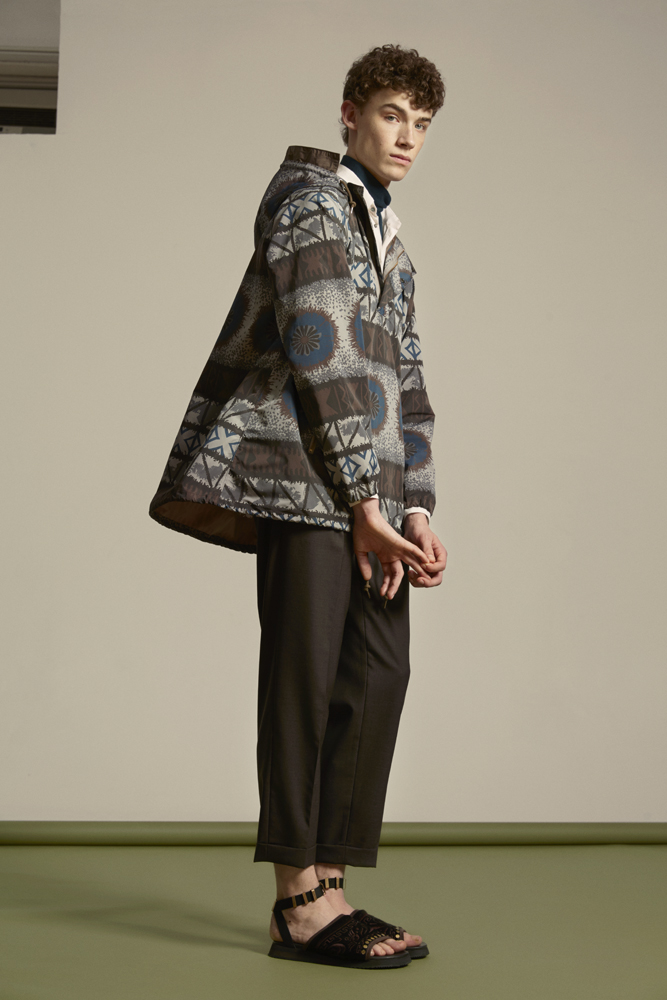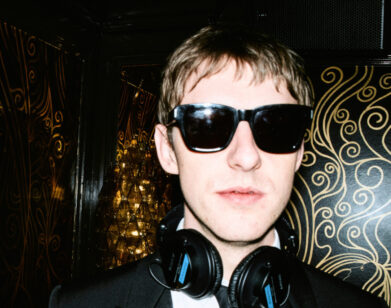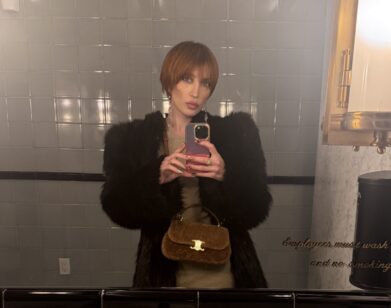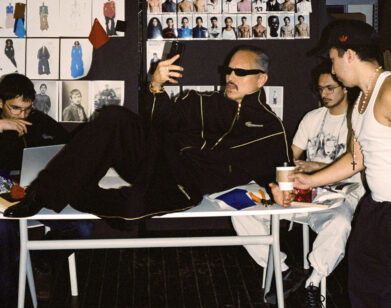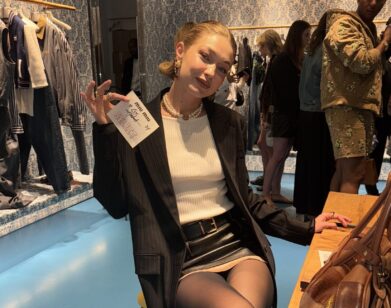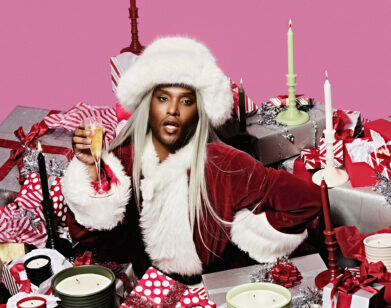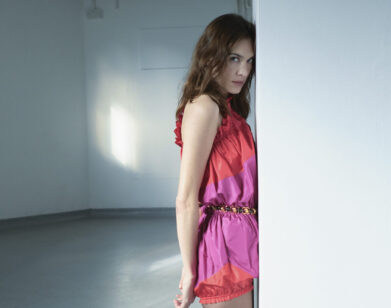Junichi Abe
If you aren’t familiar with Kolor, the cult line helmed by Junichi Abe, it may be because you aren’t spending enough time trolling the recesses of the internet devoted to the fetishizing of obscure, prestige menswear. Despite a low profile, the Japanese designer has gained a fervent following (and a slot at Paris Fashion Week) for his anomalous twists on classic sportswear. The apparent simplicity in the cut of his pieces camouflages that, for him, it’s all in the details: Sheer panels appear between stripes of a short-sleeved wintry-patterned knit, for example, or a frill of contrasting fabric peeps out like a petticoat underneath the hem of tucked shorts. Elsewhere, a paper-thin jacket’s texture mimes crocodile skin.
Abe honed his chops studying at Tokyo’s elite Bunka Fashion College and working as a patternmaker at Yohji Yamamoto and then Comme des Garçons in the late ’80s. He stayed within the Comme family afterward, transferring to the team at then-nascent Junya Watanabe (where he met his wife, Chitose Abe, who heads Sacai) before launching the label PPCM with three friends in 1994. He founded Kolor a decade later. Rather than latch on to a seasonal buzzword or inspiration like other designers, Abe’s conceptual approach veers towards the abstract plane: emotion. “It cannot be defined by words, and I think it shouldn’t be either,” he asserts. “Each season, we are aiming to create a collection carrying a feeling or mood that seems necessary at that moment, while also having an optimal balance within many different elements.”
For his spring menswear collection, the designer focused the house codes of polished modernity on a language that nodded to the climate of humid Asian locales: loose, breezy shirts, sarouel-like pants, and open sandals, treated with plaids, prints, and embroidery motifs. Getting the results he wants starts from distilling his ideas to their purest form; it’s evidenced by Abe’s ongoing experiments with Kolor, as well as a collaboration with Adidas that launched in fall 2015. “I ensure the feeling I have within myself at that moment has as much detail as possible,” he says. “People may think it is an easy thing to do; however, to be honest, it is actually not that easy to face oneself.”

